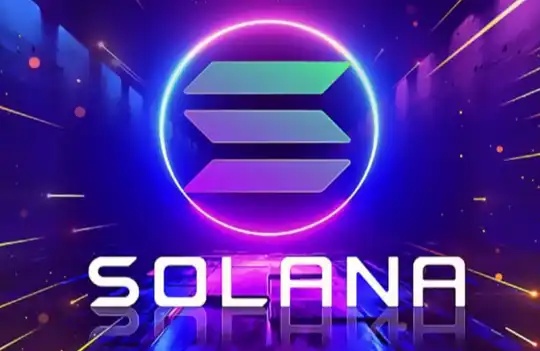What do we need to focus on in the post-Shanghai Upgrade era?
What should We pay attention to in the Post-Shanghai Upgrade Era?
Original source: Huobi Research
Abstract
Ethereum will complete the Shanghai upgrade in April with the opening of beacon-chain pledge ETH withdrawals. The Shanghai upgrade is a hard fork in Ethereum's executive layer, with a total of nine ips expected to be implemented. By 14 March 2023, about 17.5M ETH had been pledged, or 15.25% of the total ETH supply. The average Ethereum verifier has accumulated more than 2 ETH in pledged rewards, and over 1 million ETH will flow to the market after the Shanghai upgrade. The impact of the Shanghai upgrade on Ethereum's ecology is undoubtedly significant. This paper focuses on the withdrawal design and related risks of Ethereum and LSD protocols after the Shanghai upgrade, as well as the impact on the price of ETH and the price of derivative tokens related to the LSD protocol.

1. Official Ethereum withdrawal process
Withdrawal is promoted by both the executive and consensus levels, and has two rules: "partial withdrawal" and "full withdrawal." A partial withdrawal is a withdrawal of only the income portion; Full withdrawal is withdrawal from the verifier node, and full withdrawal of income + pledge. There is no difference in priority between the two withdrawal methods, which will be implemented automatically as long as necessary conditions are met:
必要条件:Validator 具备 0x01 Credential(活跃验证者存款证明,目前具有该证明的验证者比例为 42%)
Partial withdrawal conditions: The Validator is Active and the balance of the Validator is greater than 32ETH .
全部提款条件:Validator 是 Withdrawable 状态(这通常意味着 Validator 已经退出网络)
The number of withdrawal requests that the Ethereum beacon chain can execute in a fixed time period is strictly limited, and each block can handle up to 16 withdrawal requests. After the verifier meets the withdrawal conditions and makes the request, a withdrawal list is created to contain all the verifiers who made the withdrawal request, listing the order of withdrawals, the collection addresses at the execution level, and the amount of withdrawals. Withdrawals are initiated at the consensus level and do not occur independently or in the transaction memory pool, so withdrawals do not require gas and do not increase Ethereum gas.
2. Will there be an Ethereum sell-off?
According to Beaconcha.in data, as of March 14, 17,573,625 ETH had been pledged on the Beacon chain. The number of active verifiers is 549,181. Currently, the average ETH pledged by each verifier is 33.98, and the total ETH on the Beacon chain is 18,661,170.4 ETH.

Figure 1. The network history of Ethereum (source: Beaconcha.in)
Based on the withdrawal conditions and process, 512 validators can withdraw money per Epoch (each Epoch has 32 slots, each slot has a block), and 115,200 validators will be executed to withdraw money per day (12 seconds a block, 7200 blocks per day). The maximum daily total withdrawal is 3,686,400 ETH. If other factors are not taken into account, it will take about 5.06 days for all pledged ETH on the chain to be extracted based on the current number of pledged ETH. However, the process of executing withdrawals takes time, with all exiting verifiers waiting at least 27.3 hours before withdrawals can begin.
ETH pledges started in November 2020, when ETH prices were between $500 and $600, and users of these long-term pledges were likely to rush to withdraw their ETH and rewards. The pledge from February 2021 is a loss relative to today's prices. Most withdrawal requests will be "partial withdrawals." It is expected that after the open withdrawal, ETH selling pressure will not be too serious, mainly early players selling behavior.

Figure 2. ETH Price curve (source: coinmarketcap)
The withdrawal process is not always smooth, and there are some cases where withdrawal conditions are not met. In particular, a 0x00 Credential deposit certificate needs to be upgraded to 0x01 Credential after Shanghai. This conversion is also limited to 16 requests per block. The verifiers of 0x00 authentication are older on average and have accumulated more pledge rewards, which will result in a gradual increase in the total ETH extracted per block. In extreme cases, it is impossible to exit the verifier node altogether, and each pledge protocol needs to meet the loss limit function, which reduces the selling pressure to a certain extent. From the above analysis, it can be predicted that the selling pressure is larger on the 3-4 days after the upgrade in Shanghai.
In addition, according to glassnode, there are about 920 nodes that are willing to quit the verifier. At the same time, due to regulatory reasons, most ETH tokens pledged by centralized institutions will be unlocked, and in extreme cases, they will need to be withdrawn completely. This may include Kraken (6.52%) and Binance (4.92%), which have more than 2 million ETH and also take one month to complete due to the verifier churn limit function. However, these pledged ETH will not be fully circulated in the market, and will most likely continue to be deposited in other pledge agreements.
In addition, according to glassnode, there are about 920 nodes that are willing to quit the verifier. At the same time, due to regulatory reasons, most ETH tokens pledged by centralized institutions will be unlocked, and in extreme cases, they will need to be withdrawn completely. This may include Kraken (6.52%) and Binance (4.92%), which have more than 2 million ETH and also take one month to complete due to the verifier churn limit function. However, these pledged ETH will not be fully circulated in the market, and will most likely continue to be deposited in other pledge agreements.

Figure 3. Number of voluntarily quit verifier nodes statistics (source: glassnode)
LST tokens already account for about 65% of total mortgage volume. And these mortgage derivative tokens, in the past two years, there has been a significant discount. At present, due to the approach of Shanghai upgrade, LST overall liquidity is good. The opening of withdrawal is good for the return of LST price, but it also tests the risk management ability and withdrawal process design of each LSD project.
3. Status quo of each LSD agreement and withdrawal design
3.1 Performance of liquidity pledge tokens (LST
At present, the total amount of ETH pledged by all kinds of LSD protocol accounts for 42.97% of all pledged, and Lido protocol alone accounts for more than 30%. The collateralized derivative tokens of these agreements, LST, have been circulated in the secondary market before the Shanghai Upgrade, and they are currently performing well in the yield of the DeFi agreement.

Figure 4. DeFi yields ranking (Source: Defillama)
LST tokens already account for about 65% of total mortgage volume. And these mortgage derivative tokens, in the past two years, there has been a significant discount. At present, due to the approach of Shanghai upgrade, LST overall liquidity is good. The opening of withdrawal is good for the return of LST price, but it also tests the risk management ability and withdrawal process design of each LSD project.

Figure 5. Ethereum pledge ratio

stETH is currently the most liquid LSD token. As can be seen from the stETH/ETH price curve below, the price of stETH/ETH experienced a large discount during March 2021 and June 2022, corresponding to the 3AC and FTX events respectively. This is mainly due to lack of liquidity. The selling in 2021 happened to be at the peak of the market, and most of the selling users were mortgage users at the end of 2020, where the exit profit was more.

Figure 5. Ethereum pledge ratio
stETH is currently the most liquid LSD token. As can be seen from the stETH/ETH price curve below, the price of stETH/ETH experienced a large discount during March 2021 and June 2022, corresponding to the 3AC and FTX events respectively. This is mainly due to lack of liquidity. The selling in 2021 happened to be at the peak of the market, and most of the selling users were mortgage users at the end of 2020, where the exit profit was more.

Figure 6. stETH/ETH price curve
Coinbase's LST token cbETH has always been in a discount state before, and cbETH is mainly in Uniswap. Currently, the TVL is about $7.5M, and the daily trading volume is low, so there may be a situation of illiquidity. But it has been strong lately. Perhaps as the Shanghai upgrade approaches, arbitrageurs can profit by buying cbETH at a discount.

Figure 7. cbETH TVL (Source: Uniswap)
Rocket pool has the third largest market share in LSD protocols, with its derivative token rETH valued at $391M and 210,000 in circulation. After Shanghai upgrade, users can return the rETH to the agreement, so as to redeem the pledged ETH and corresponding rewards, so the price of rETH in the secondary market has been higher than ETH.

Figure 8. rETH/WETH Price curve
3.2 Comparison of withdrawal processes of each LSD protocol
The withdrawal scheme design of each LSD protocol has uncertain risks. Ethereum Shanghai upgrade is the improvement of PoS mechanism, but also a challenge to the LSD protocol. Protocols need to strike a balance between user experience, speed of operation, and security. As a whole, the PoS withdrawal process of Taifang is very complicated, especially the time allocation of different withdrawal agreements. After the Shanghai upgrade, each LSD protocol may be attacked due to design defects. Most withdrawal designs address the following two issues:
1、避免攻击和套利行为:主要是LST代币与ETH的协议兑换和二级市场可能存在价格波动进行套利,降低协议APR。如何满足协议有足够ETH供用户赎回等。
2、在设置提款门槛的时候又能提高用户体验,尤其是用户等待时间。
3.2.1 Lido
Lido v2 has been voted by the community. The Lido withdrawal design has two modes: Turbo and Bunker. Lido establishes a withdrawal buffer for withdrawal, which consists of three parts: executive reward, withdrawal ETH and user pledge ETH. After the Shanghai upgrade, 20w ETH of Lido can be extracted immediately (no need to go through the exit verification node process), which can be used for the establishment of buffer.
Turbo模式:一旦有足够的ETH,协议会满足提款请求。请求时间在1小时-3/4天不等,根据缓冲区是否有足够ETH,等待时间不定(需要验证者节点退出)。
Bunker模式:如果Lido验证者节点出现大范围罚没,即触发该模式,需要等到被罚没节点退出后,能够预测损失,从而将损失分摊给用户。并且要确保stETH:ETH的赎回计算可以准确进行。这个模式下,提款可能需要36天以上的时间。
After a user's withdrawal request is queued, the user gets an NFT, which represents his position in the request queue. The NFT can be traded on the secondary market, and those willing to bid can buy the one near the top. If ETH prices fluctuate significantly in April, this secondary market can be played in many ways. If a forfeiture occurs during the request, users in the queue are equally penalized. But stETH withdrawal requests in the queue are not rewarded, again to avoid malicious arbitrage attacks.
In addition to the above design, in order to avoid attacks and arbitrage, Lido withdrawal has other requirements, such as the withdrawal request cannot be cancelled, the redemption rate of the request should not be better than the redemption rate of the creation of the request, etc.
3.2.2 Rocket pool
Rocket Pool introduced minipools, reducing the capital requirement for verifiers, requiring only 17.6 ETH to operate a minipools, and when the pool is withdrawn, the verifier's capital will be the first to lose, leaving rETH holders 110% insured.
For withdrawal requirements, Rocket Pool has designed a deposit pool where rETH redemptions can be made from the deposit pool and partial withdrawals to provide ETH. rETH can also be discounted to ETH from the secondary market. This is an arbitrage opportunity for minipools operators as they can buy rETH at a discounted price from the secondary market. And exit minipools using the Rocket Pool combustion mechanism, thus guaranteeing a rETH:ETH=1:1 exchange rate. As a result, Minipools operators can opt out or withdraw rewards at their discretion, which is entirely determined by market behavior.
For Rocket Pool, the withdrawal process is not complicated, operators only need to withdraw minipools, but it is important to improve the liquidity of the agreed deposit pool so that rETH can redeem smoothly. At the time of the Ethereum merger, the Rocket Pool protocol handled the merger well, and one of the node operators for the Lido protocol experienced an outage. As a result, Rocket pool will perform better in the event of a Shanghai upgrade. The Rocket Pool Atlas upgrade will lower the barrier to becoming a verifier, further boosting rETH's liquidity and RPL's coin price.
3.2.3 Frax Finance
The user gives the ETH to Frax for pledge. frxETH does not accumulate the pledge reward, but redeems the ETH on a 1:1 basis within the agreement. In order to receive the pledge reward, the user needs to redeposit frxETH into the agreement and receive sfrxETH. Therefore, the redemption of Frax will not be affected by the Shanghai upgrade, and it is more important to consider whether the agreement can provide enough ETH for redemption. Especially if Frax is no longer able to attract users based on higher revenue, there may be significant redemptions.

Figure 9. frxETH APY & TVL (Credit: Defillama)
3.2.4 StakeWise
StakeWise provides a liquidity pledge service similar to Lido, except that the StakeWise V3 version is updated to address risk from central Stakewise but is not yet available. The StakeWise pledge has two mechanisms: Pool and Solo. The Pool mechanism is a pledge pool for any ETH holder to participate in, while the Solo mechanism is an unmanaged pledge service for each user with 32 ETH.
In terms of exit mechanism, Pool mechanism users need to upgrade in Shanghai before destroying sETH2 and rETH2 within the agreement, and receive ETH in a 1:1 ratio in return. Before the Shanghai upgrade, there was a secondary market that could trade sETH2 and rETH2, two types of pledge derivative tokens. Solo users can voluntarily quit before the upgrade in Shanghai, and the balance cannot be accessed and the pledge cannot be re-entered. After the upgrade in Shanghai, if they choose to voluntarily quit, the fees will continue to accumulate until they completely quit, which will take about a few days.
4. Conclusion and reflection
The impact of Shanghai upgrade on LSD protocol mainly includes three aspects:
(1) Currency price, including ETH, various LSD protocol tokens and protocol derivatives token prices;
(2) The withdrawal design tests the technology of each LSD protocol, and the user starts to rearrange;
(3) More DeFi protocols based on Ethereum pledge or LSD protocols.
Once users can re-select the pledge protocol, a new round of Ethereum pledges begins to be reshuffled. Also, new LSD protocols or pledge based mechanisms will be introduced, such as DVT-based applications and EigenLayer's re-pledge concept, which are likely to have better returns. For most ETH pledges, after the Shanghai upgrade, they can change the way and object of the pledge initially decided, and the market share of the entire Ethereum pledge is redistributed.
Users will consider more liquidity pledge agreements in terms of drawdown design fluency, pledge income, no license, and security. Next to Lido, Rocket Pool is likely to be the fastest growing LSD protocol, with a focus on the number of minipools established after the Shanghai upgrade and its currency movements. In particular, it's been updated with Atlas, which is all about withdrawal design, reward system, and scalability.
There are already index tokens based on LSDS. For example, Gitcoin partnered with Index Coop to launch gtcETH's new Ethereum Pledge Index token. The aim is to provide users with a place to get a mix of benefits from various liquidity pledge services. At the same time, it helps promote multiple LSDS, further diversifying Ethereum. Beyond that, there are many more DeFi apps to come:
(1) Casting new derivatives using LST;
(2) Futures products anchored to ETH yield;
(3) Stablecoin projects based on pledged ETH. Ethereum pledge unlocking may also add incremental value to the lending agreement, and many articles have analyzed the potential for high returns from repledge.
Reference material
https://github.com/ethereum/consensus-specs/blob/dev/specs/capella/beacon-chain.md#has_eth1_withdrawal_credential https://tim.mirror.xyz/zLdl8bEiDmobHZ5RlvG2LrlZLWV9c2XvkuKQ-vpljSU https://coinvoice.cn/articles/29918 Gitcoin Launches gtcETH Index Token To Bolster Funding - The Defiant https://hackmd.io/@lido/SyaJQsZoj Partial withdrawals after the Shanghai fork
https://dataalways.substack.com/p/partial-withdrawals-after-the-shanghai
StakeWise document: https://docs.stakewise.io/stakewise-pool
About the Huobi Institute
Huobi Blockchain Application Research Institute (Huobi Research Institute for short) was founded in April 2016. Since March 2018, Huobi Research Institute has been committed to comprehensively expanding the research and exploration in various fields of blockchain. With the pan-regional blockchain field as the research object, Huobi Research Institute aims to accelerate the research and development of blockchain technology, promote the application of blockchain industry and promote the ecological optimization of blockchain industry. His main research content includes industry trends, technology paths, application innovation, and mode exploration in the field of blockchain. Based on the principle of public welfare, rigor and innovation, Huobi Research Institute will carry out extensive and in-depth cooperation with government, enterprises, universities and other institutions in various forms, build a research platform covering the complete industry chain of blockchain, provide a solid theoretical basis and trend judgment for blockchain industry personnel, and promote the healthy and sustainable development of the whole blockchain industry.
disclaimer
火必区块链研究院与本报告中所涉及的项目或其他第三方不存在任何影响 报告客观性、独立性、公正性的关联关系。 本报告所引用的资料及数据均来自合规渠道,资料及数据的出处皆被火必区块链研究院认为可靠,且已对其真实性、准确性及完整性进行了必要的核查,但火必区块链研究院不对其真实性、准确性或完整性做出任何保证。 报告的内容仅供参考,报告中的结论和观点不构成相关数字资产的任何投资建议。火必区块链研究院不对因使用本报告内容而导致的损失承担任何责任,除非法律法规有明确规定。读者不应仅依据本报告作出投资决策,也不应依据本报告丧失独立判断的能力。 本报告所载资料、意见及推测仅反映研究人员于定稿本报告当日的判断,未来基于行业变化和数据信息的更新,存在观点与判断更新的可能性。 本报告版权仅为火必区块链研究院所有,如需引用本报告内容,请注明出处。如需大幅引用请事先告知,并在允许的范围内使用。在任何情况下不得对本报告进行任何有悖原意的引用、删节和修改。
Welcome to join the official BlockBeats community:
Telegram Subscription Group: https://t.me/theblockbeats
Telegram Discussion Group: https://t.me/BlockBeats_App
Official Twitter Account: https://twitter.com/BlockBeatsAsia


 Forum
Forum Finance
Finance
 Specials
Specials
 On-chain Eco
On-chain Eco
 Entry
Entry
 Podcasts
Podcasts
 Activities
Activities
 OPRR
OPRR








